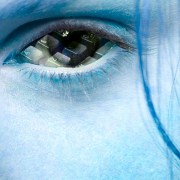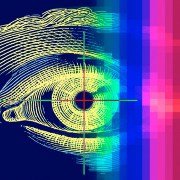 Photo: Getty Images
Photo: Getty Images
Covering the pupil and iris of the eye is the cornea, a clear area of tissue that helps to focus light. A corneal abrasion is when the cornea is injured, such as from a scratch or scrape. Children’s Hospital Boston noted that this type of eye condition is very common in children.
So what can cause a corneal abrasion? Objects that get into the eye can cause injury to the cornea. For example, if dirt, dust or sand gets into a person’s eye, the cornea can become scratched. Other foreign objects that may come into contact with the cornea, such as pebbles, insects, metal shavings, wood or sawdust, can cause a corneal abrasion. A fingernail that scratches the cornea can also cause an injury.
The American Academy of Family Physicians pointed out that a person who rubs her eyes very hard can also develop a corneal abrasion. Other causes of a corneal abrasion include dirty or dry contact lenses and front air bags that come in contact with the eye.
People who use tanning beds without using eye protection, workers performing electric arc welding without the necessary eye protection, or people who are exposed to bright sunlight for extended periods of time without using sunglasses have an increased risk of developing a corneal abrasion, according to the University of Illinois at Urbana-Champaign.
Since the cornea is sensitive, a person with a corneal abrasion will experience pain. Pain can also occur when the person moves her eye. Besides pain, a corneal abrasion may cause redness, blurry vision and teary eyes. A person with a corneal abrasion may feel like there is something in her eye.
Sensitivity to light may occur, in which the person has pain when she looks at a light. For some people, they may have headaches with a corneal abrasion. Children’s Hospital Boston noted that in younger children, they tend to try holding the eye with the corneal abrasion shut.
While anyone with an injury in their eye should seek medical attention, the Cleveland Clinic stated that if a person is having certain symptoms, she needs to see her doctor. This includes having pain that does not go away, being very sensitive to light, and feeling like there is something in eye, even if she cannot find an object in her eye. Medical attention should be sought if there is an object in a person’s eye, which may need to be removed by a doctor, such as a splinter.
References
Children’s Hospital Boston. Corneal Abrasions. Web. 19 December 2011
http://www.childrenshospital.org/az/Site2128/mainpageS2128P1.html
American Academy of Family Physicians. Corneal Abrasions. Web. 19 December 2011
http://familydoctor.org/familydoctor/en/prevention-wellness/staying-healthy/first-aid/corneal-abrasions.html
University of Illinois at Urbana-Champaign. Corneal Abrasion. Web. 19 December 2011
http://www.mckinley.illinois.edu/handouts/corneal_abrasion.html
Cleveland Clinic. Corneal Abrasion. Web. 19 December 2011
http://my.clevelandclinic.org/disorders/corneal_abrasion/default.aspx
Reviewed December 19, 2011
by Michele Blacksberg RN
Edited by Jody Smith




Add a CommentComments
There are no comments yet. Be the first one and get the conversation started!